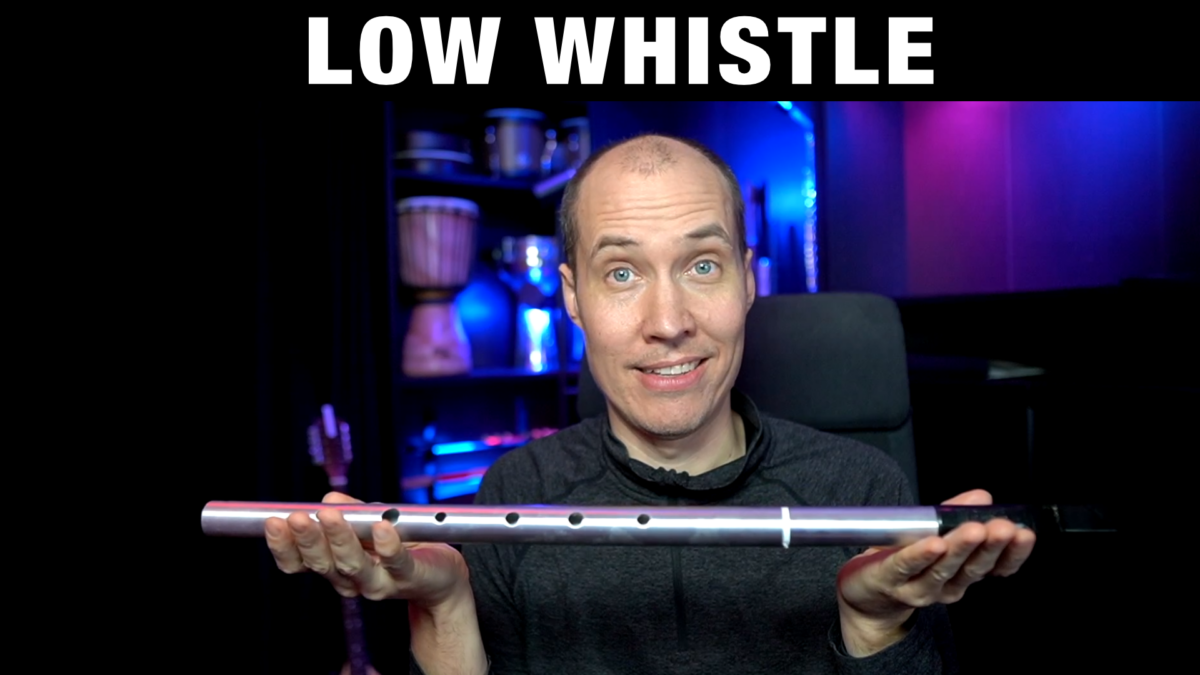 What is a Low Whistle?
What is a Low Whistle?
The low whistle is a bigger and lower range version of the traditional “tin whistle” (also called penny whistle).
The most common low whistle key is D, 1 octave below the standard high D tin whistle. This makes the sound deeper, but also more mellow in tone and character.
In fact, there are tin whistles in all keys, and there is no defined point where the tin whistle key is suddenly called a low whistle. Some players even refer to some of the keys between the standard high D tin whistle and standard low D whistle as “alto whistles”.
For example: personally I find that the F below the standard high D tin whistle is where the low whistle range starts. F# to A is what I call “alto whistles” (the mid range whistles). And from Bb and above I name them tin whistles (soprano whistles).
Is the Low Whistle Easy to Play?
Short answer is: no, it is fairly easy and straight-forward.
However, this depends on the physical abilities of the player. Because the low whistle is much larger, and the finger holes are further apart, you will struggle more if you have small hands or difficulties in stretching your fingers.
You will also need to learn something called “piper’s grip”, to play the low whistle, which basically is to tilt your hands so that you cover the holes lower on your fingers instead of the top finger pad (finger tips) like you do on a tin whistle. This will take some time to get used to.
The 1st octave, and especially the lowest notes, are actually easier to play than the tin whistles, since you don’t accidentally over-blow as much compared to a tin whistle.
The 2nd octave, and especially the higher notes, will require a vast amount of air to play. And sustaining long notes up in the high 2nd octave will be a struggle even for experienced players.
This is simply a matter of physics, as you need to over-blow a low whistle (and tin whistle) to reach the 2nd octave. And the larger size of a low whistle means you need to drive more air into it to get to those high notes.
Is Low Whistle harder than Tin Whistle?
Yes, I highly recommend everyone to start on the tin whistle. It is much easier for several reasons: it is smaller, lighter and the holes are closer together.
It is also much easier to play the 2nd octave in terms of air requirements. Ornamentation are also easier since you have much better dexterity with your fingers that close together on a smaller instrument like the tin whistle.
However, there are some aspects of the low whistle that are easier. For example, playing the lower notes without over-blowing is easier on the low whistle. Since the holes are bigger you will have a much easier time doing things like note bends, sliding legatos, and even half-holing.
Which Low Whistle Key should you get?
You need to first consider what keys you generally want to play music and songs in. The reason why D is a common key of tin whistles and low whistles, is that it is a common key for Irish music and the instruments they use: violin (fiddle), bouzouki, guitar etc.
But it is also very important to choose a key for your first low whistle, that you will be able to play. I would recommend to start on a low F or Low G whistle first, which are both great sounding keys, and much easier to play than a low D.
Another aspect to consider is the brand and design of the low whistle. Some low whistles are “soft-blowers “(requires less air), and some are “hard blowers” (requires more air).
This is important because the more air the whistle requires the stronger the lower notes will be, and the more range you will have for expression, dynamics and vibrato.
But the soft blowers will be much easier on your lungs, and the 2nd octave will be a lot easier to play. They don’t get too loud in the highest notes either.
Finally the material of the low whistle, and the design of the mouth-piece, is something you should consider. In the best case you can try them out in a store yourself, as this is very subjective on what you prefer.
For example: personally I prefer low whistles of metal, with a short mouthpiece, and a bigger bore (thickness of the tube), and big tone holes. This gives me more expressive control, but it requires more technique to play well.

